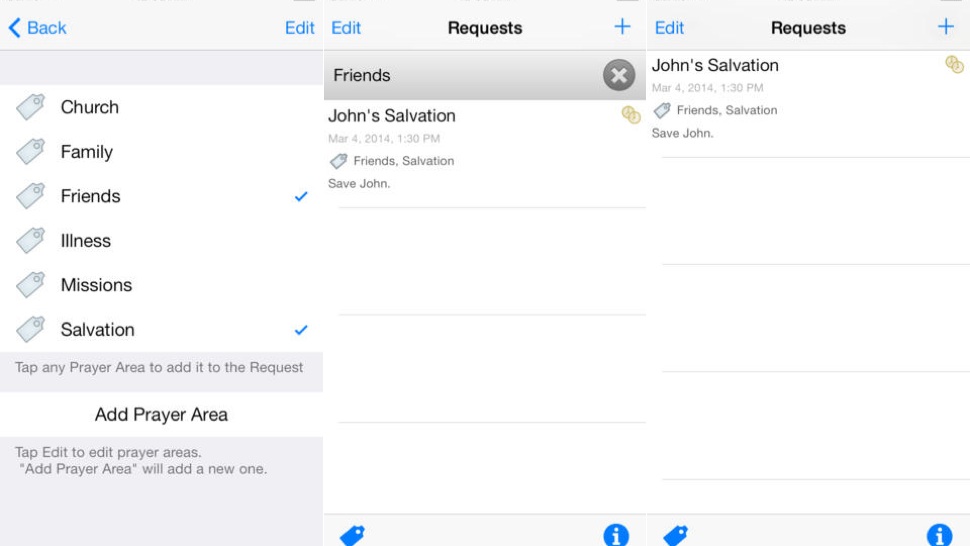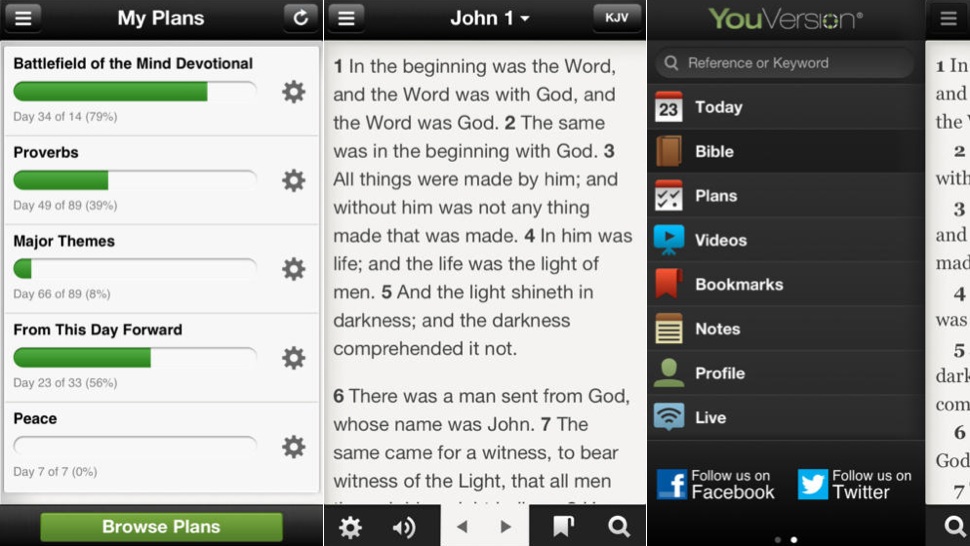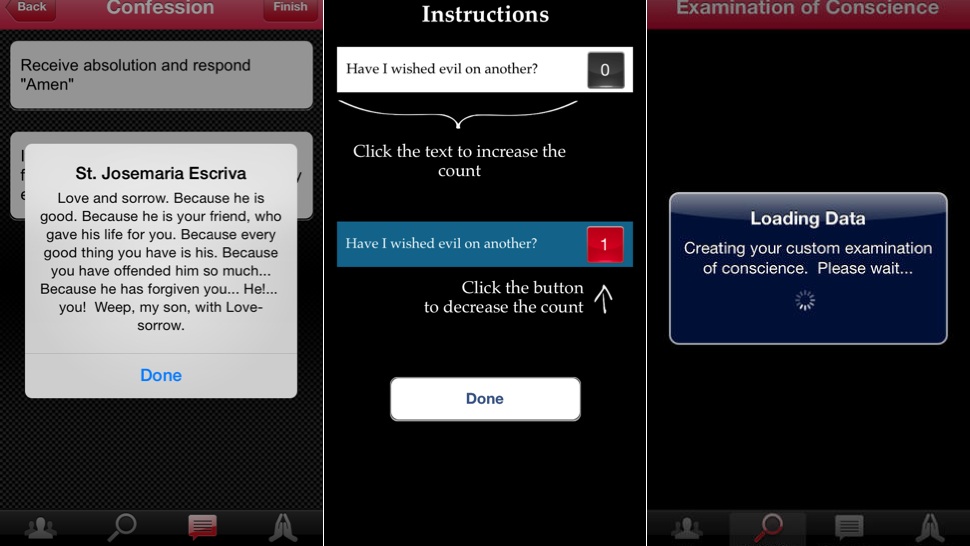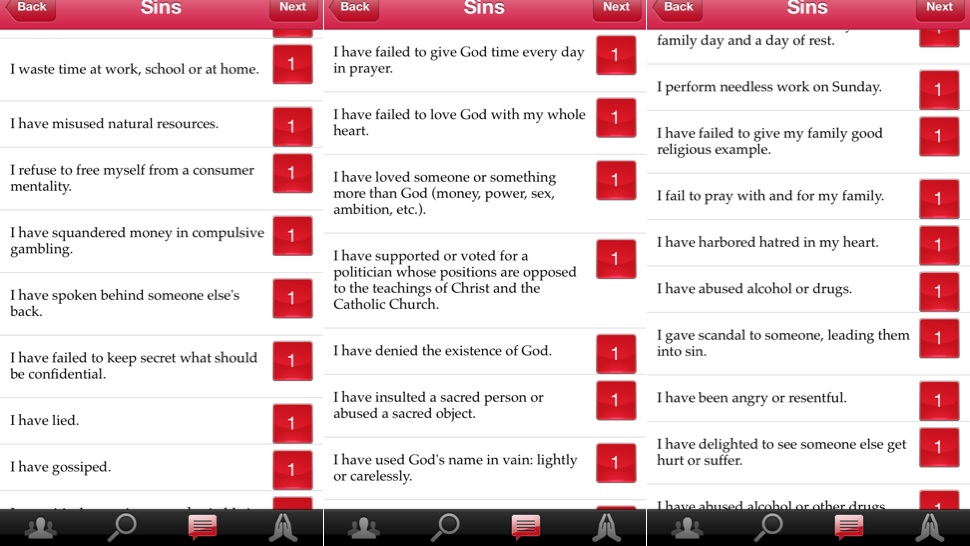At this point, our entire lives could be boiled down into a series of apps. Schedules, diets, friends, family, play — it’s all there in a set of brightly coloured, easy-to-digest icons that have come to define the way we see ourselves. And though it may be hard to reconcile, even religion is no more than a Google Play or App Store click away. The salvation of your eternal soul is now downloading.
As unlikely as it might seem today, religion was once inextricable from one of the most progressive and impactful technological advancements in human history — the printing press. Obviously, things change. Whereas the Bible was the first text to experience widespread mass production, it’s taken it a bit longer (along with other religious texts and religions in general) to latch onto today’s hot, new medium: mobile apps.
Of course, that’s not to say such apps aren’t being made in droves — they are. An ongoing study by Heidi Campbell, Associate Professor of Communication at Texas A&M University, has catalogued over 500 religion-oriented apps in the iTunes App Store alone. And that’s not even the half of it. Rather, the issue lies in religious leaders’ and congregations’ hesitation in relying on the same technology that gave you sexting for sacred prayer.
According to Cheryl Casey, Assistant Professor of Media Communication at Champlain College:
When a new technology, such as the printing press or the Internet, unleashes massive cultural change, the challenge to religion is immense. Cultural developments change how God, or the ultimate, is thought of and spoken about.
There’s another, perhaps less often vocalised issue. Religious institutions rely on their devout followers to stay afloat, but if everyone’s fulfilling their own spiritual needs in between rounds of Words With Friends, they might find that those institutions are no longer necessary.
Holy Reminders
As we’re all fully aware, people are busy these days. We’re barely able to wedge a few hours of sleep into our schedules, much less time for holy reflection. So, not to be outdone by the many life organisation apps out there, there’s a plethora of mobile options to keep your daily rituals in check.
These are, perhaps, the least controversial in terms of blurring the lines between what is and is not deemed appropriate by your faith of choice. The app itself isn’t attempting to be a direct link to your faith. Rather, it’s just there to act as a friendly little reminder in the same way a scheduling app might. The difference here is that this reminder just might save your heathen friend John’s immortal soul. At least, that’s how religious app Pray! wants you to see it.

How is this different from any other reminder app? Well, it’s not. The only difference here is that the app claims it is specifically for prayer. It’s special and unsullied by the rest of your everyday apps. Even in the mobile world, religion needs a place apart from your everyday routine.
However, an Islamic app used for a similar purpose, Muslims’s Prayer Times, is a bit more useful in giving users something other apps simply could not. Not only does the app help users keep track of their five daily prayer times, there’s even a compass to ensure that the user always knows which direction looks towards Mecca (the direction in which they’re supposed to pray).

These sorts of apps are generally the least transgressive and, as such, the least enticing. As soon as the seduction of convenience enters the mix, though, you start to see a problem.
The Good eBook
Digitising religious texts didn’t just start with apps. People have been doing it since the 1990s. Now, though, the prevalence of smartphones hasn’t just made scripture-loaded phones a common occurrence: some congregations even expect them.
The most prevalent Bible app, YouVersion, is used as the main text for a variety of modern churches, even occasionally being projected on overhead monitors so congregants can follow along. Because, in addition to simply being a convenient store of biblical text, the app lets churches create custom Bible study plans that its members can follow.

While this works in Christianity, other religions (such as Orthodox Judaism) don’t allow you to touch sacred texts at all — virtual or otherwise. Campbell elaborates:

Some of these apps have found ways to be theologically justified, such as, Well, the touching of the screen creates a barrier between the real text — the offline text. So it’s seen as acceptable. Or others will give you a kind of guideline, such as using a yad when reading the Torah on your phone. Same as in Islam, there are certain guidelines to how you hold and engage in the text.
There’s a close connection between the online and the offline. And in most cases people are trying to say well, what are the offline rules and what kind of practices do we then adapt and adopt into virtual spaces?
Religious Rites
Where you begin getting into questionable territory, though, is with apps that claim to actually help facilitate religious experiences themselves. Though the idea of sending God a message through an app might sound absurd, some might argue that it’s not so different from the more traditional realm of prayer. Both are technically virtual.
According to Casey:
Cyberspace “revirtualises” religious ritual. As a result, the ritual, as enacted symbol, negates itself so that the sacred or divine to which it points becomes that much clearer…
Cyberspace lends a negating component to any ritual, thereby rendering it a uniquely appropriate medium for the enactment of ritual. The online Holy Communion provides a particularly salient example of this argument. As a result, we are then forced to rethink the criteria for viable religious ritual.
Of course, religious institutions tread very carefully around these apps, one of the more notable examples of which is the app Confession. It’s exactly what it sounds like.
Technically, the app’s full name is Confession: A Roman Catholic App. So you can imagine who might had seen its existence as a bit of a problem; the Catholic Church doesn’t exactly have the best track record when it comes to — well, anything new ever. And one look at the screenshots below makes it clear that, even though the app is technically meant to be used in a confessional, this is one major shortcut to eternal salvation.

The app caused a major stir when it first came out in 2011. The idea was that Confession would act as a guide, allowing you to better equip yourself with the knowledge of your many, various sins before you actually went into to go face-to-(sort of)-face with a priest. In other words, it’s supposed to get you in and out of confession as fast as possible. Not quite a substitution — but not exactly the point of confession either.
As Campbell told Gizmodo:
The problem with the Confession app wasn’t the app itself; it was how the app was framed. It basically just makes the confession process more efficient, but it got framed in the media as a substitution. A lot of religious groups and organisations have pretty strict boundaries. This is how you do this ritual; this is how a community likes its practice; etc. Any time an app is transgressing those boundaries, it’s going to be seen as problematic.
While it is technically described as a guide, after going through the various steps to salvation within the app, it’s not hard to see how one might view it as an acceptable DIY alternative to confession. Especially if, like me, you’d never actually been to confession before and were left with quite a few venial sins (and a few mortal ones, at that) to get off your chest. This is just a small selection of what we were dealing with.

So yes, the idea of absolving myself of my transgressions via the warm, inanimate glow of my non-judgey iPhone screen would be tempting. And, apparently, others thought so too.
Confession became such an issue amongst churchgoers that the Vatican even felt the need to speak out against how some were using it, saying that it’s “essential to understand well that the sacrament of penitence requires the personal dialogue between the penitent and the confessor and the absolution by the confessor.” And that this holy interaction “cannot in any way be replaced by a technology application.”
New Icons
The fact of the matter remains that, whether religious institutions like it or not, the way we understand faith is changing. Casey even goes so far as to argue that “far from draining traditional religious practices from their sacred meanings, online rituals provide meaningful experiences for those seeking new ways of practicing their faith. ”
Even the Church of England, one of the religious institutions most resistant to change, has recently put its Book of Common Prayer in app form. In order to stay accessible, religion has to be willing to provide the resources that have become so intrinsic to daily life.
The question is, though, just how far religious leaders are willing to bend the rules to stay relevant in a world that refuses to wait.
